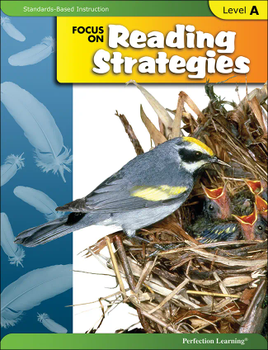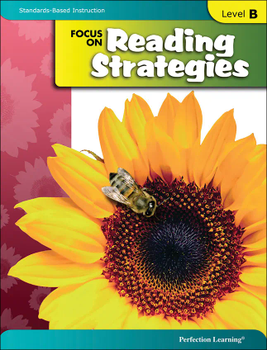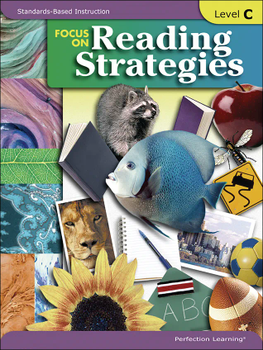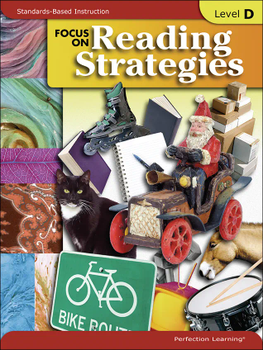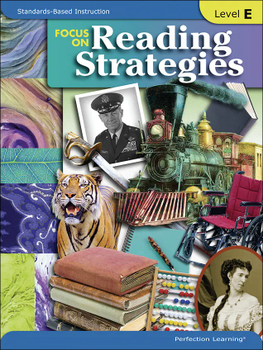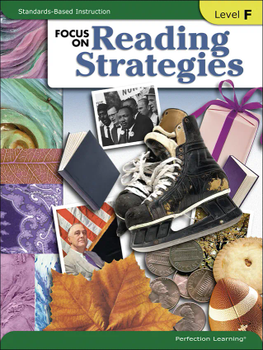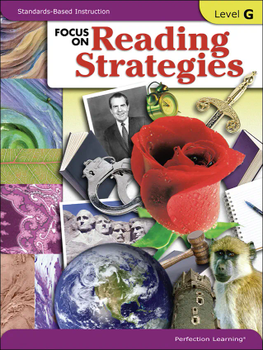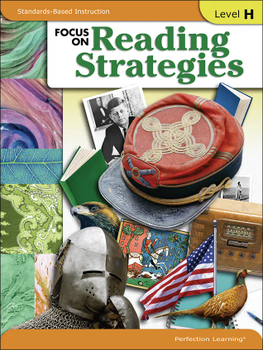This is a demo store. No orders will be fulfilled.
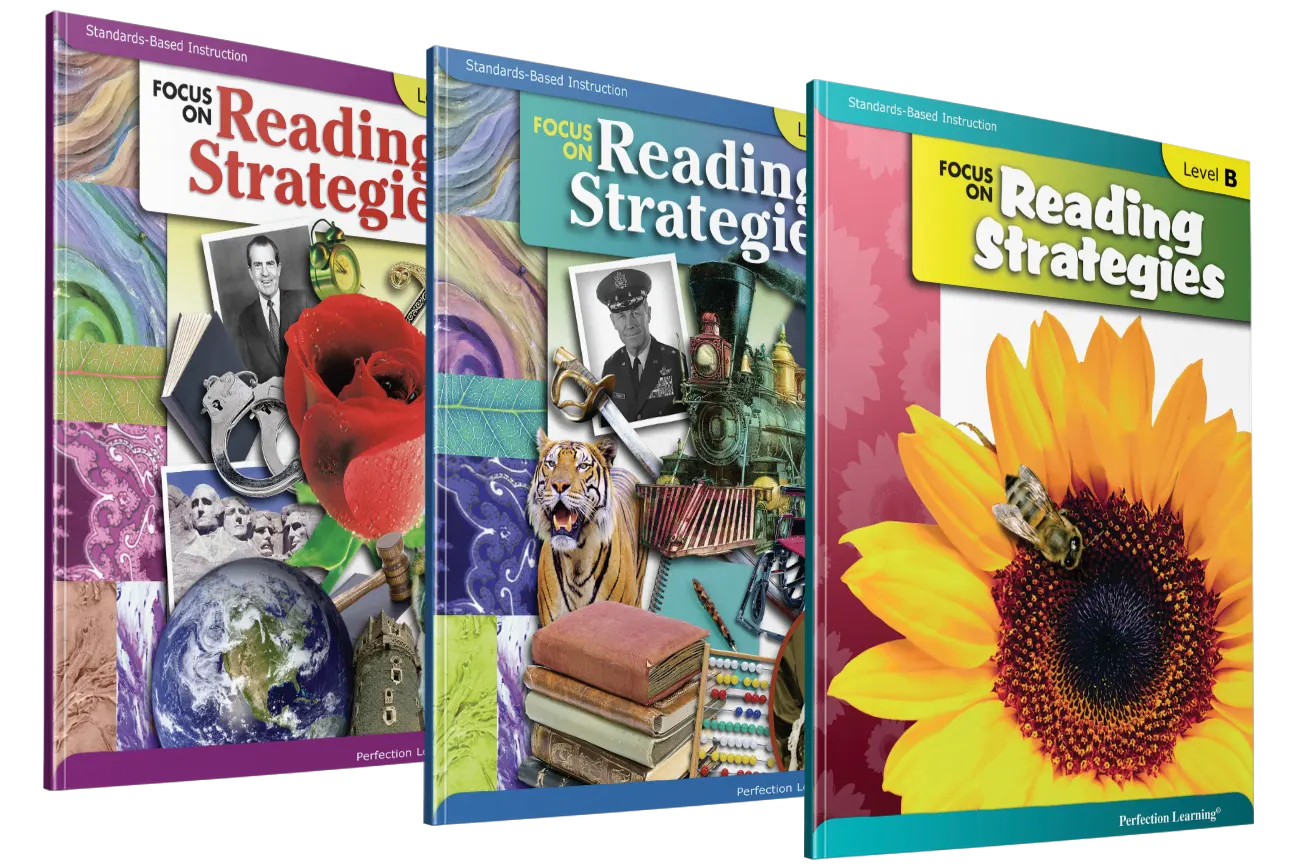
Focus on Reading Strategies
Create skilled, strategic, successful readers through instruction aligned to standards
Teaches the active reading strategies research has shown most effectively improve reading comprehension.
Each workbook offers direct instruction and practice of essential active reading strategies through text-dependent questions and tasks—previewing, making connections, evaluating, summarizing, and more.
Students practice reading comprehension skills while reading high-interest fiction and informational selections in a wide range of genres and topics. They practice and master fiction and informational reading skills and useful vocabulary strategies as they read. Writing activities and review lessons assess progress.
A variety of before-, during-, and after-reading strategies address multiple learning styles.
Titles in This Program

Default
Program Features & Resources
Each lesson has six consistent sections that guide learning. Students use essential reading strategies as they complete a variety of multimodal activities.
1. Before Reading: Heads Up
Students access prior knowlege to provide a framework for deeper textual understanding.
2. During Reading: Think-Along Questions
Readers interact with the text through questioning, predicting, and making connections.
3. After Reading: Make Sense of Words
Vocabulary strategies build vocabulary and provide tools for independent reading.
4. After Reading: Read with Understanding
Multiple-choice questions, similar to those on state and national tests, provide practice for the targeted skill.
5. After Reading: Understand by Seeing It
Students use visual mapping strategies with a variety of graphic organizers.
6. After Reading: Write to Learn
Students demonstrate mastery of comprehension skills and reading strategies through writing activities.
Reading Strategies
- previewing
- visualizing
- summarizing
- evaluating
- monitoring
- self-questioning
- making connections
- knowing how words work
Reading Comprehension Skills
- inferring
- theme
- plot
- cause and effect
- symbolism
- and more
Vocabulary Strategies
- recognizing antonyms, synonyms, homonyms, idioms, root words, and affixed
- identifying multiple-meaning words
- using a thesaurus
Review for Mastery
A writing prompt at the end of each lesson allows students to demonstrate their comprehension skills. Two review lessons monitor students' progress and allow students to practice new skills and strategies.
Listening Comprehension
A listening lesson after each review helps students become active and attentive listeners by making and confirming predictions about a selection read to them.
Teacher Guides
Frontload standards-based skill instruction
- Unit introductions provide discussion points for introducing the skill.
- Scripted minilessons offer tools for skill modeling and instruction.
- Reproducible activities bridge instruction and practice.
- Vocabulary lists and reproducible vocabulary cards prepare students for reading the selections in the student books
Teacher Guides also contain
- An overview of research for teaching active reading strategies.
- A step-by-stp guide for using the student book to product strategic readers.
- Two complete listening comprehension lessons.
- Response keys for all lessons.
Teacher Guides include Common Core and state-specific correlations.
Sample Pages
Grade 1 (Book A)
Student Edition | Teacher Guide
Grade 2 (Book B)
Student Edition | Teacher Guide
Grade 3 (Book C)
Student Edition | Teacher Guide
Grade 4 (Book D)
Student Edition | Teacher Guide
Grade 5 (Book E)
Student Edition | Teacher Guide
Grade 6 (Book F)
Student Edition | Teacher Guide
Grade 7 (Book G)
Student Edition | Teacher Guide
Grade 8 (Book H)
Student Edition | Teacher Guide
Research Notes
Common Core State Standards
California
California English/Language Arts Standards correlations
Florida
Florida Language Arts Grade Level Expectations correlations
Georgia
Georgia Performance Standards for grades K-8 English Language Arts/Reading correlations
Mississippi
Mississippi Curriculum Frameworks correlations
New York
Ohio
Oklahoma
Oklahoma Priority Academic Student Skills correlations
